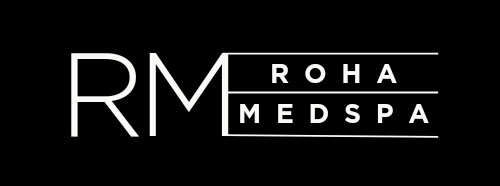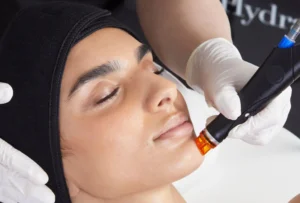Acne scars can be a persistent reminder of past breakouts, affecting your confidence and overall skin appearance. Fortunately, modern dermatology offers effective treatments to minimize these scars, with microdermabrasion and microneedling being two of the most popular options. But when it comes to deciding “What Is Better for Acne Scars: Microdermabrasion or Microneedling?” it’s crucial to understand the unique benefits and mechanisms of each treatment. By exploring the differences, effectiveness, and suitability of microdermabrasion and microneedling, you can make an informed choice to achieve smoother, clearer skin and restore your self-confidence.
Understanding Acne Scars
Before we get into the nitty-gritty of microdermabrasion and microneedling, let’s quickly touch on what acne scars are. Acne scars form when the skin’s healing process goes a bit haywire. There are different types of acne scars, including:
- Atrophic Scars: These are the most common and appear as depressions in the skin. They include ice pick, boxcar, and rolling scars.
- Hypertrophic Scars: These are raised scars that occur when the body produces too much collagen during the healing process.
- Post-inflammatory Hyperpigmentation: Not technically scars, but dark spots that linger after an acne lesion has healed.
What is Microdermabrasion?
Microdermabrasion is like giving your skin a supercharged exfoliation session. This non-invasive procedure involves a device that sprays tiny crystals onto your skin, gently removing the outermost layer of dead skin cells. Think of it as a fancy face scrub with high-tech equipment.
How Does Microdermabrasion Work?
Microdermabrasion works by physically exfoliating the skin. Here’s a step-by-step rundown of the process:
- Preparation: Your skin is cleansed to remove any dirt and oil.
- Exfoliation: A handheld device sprays fine crystals onto your skin while simultaneously vacuuming away the dead skin cells and used crystals.
- Aftercare: A soothing serum or moisturizer is applied to calm the skin.
This process encourages cell turnover and can help improve the appearance of superficial acne scars and hyperpigmentation.
Benefits of Microdermabrasion
- Non-invasive: It’s a relatively gentle procedure with minimal downtime.
- Improves Skin Texture: Great for giving your skin a smoother, brighter appearance.
- Quick Procedure: Typically, a session lasts about 30 minutes.
Drawbacks of Microdermabrasion
- Superficial Results: While it’s fantastic for minor scars and skin texture, it might not be effective for deeper scars.
- Multiple Sessions Required: For noticeable improvement, you’ll likely need multiple treatments.
- Temporary Redness: Some people experience temporary redness and sensitivity after the procedure.
What is Microneedling?
Microneedling, also known as collagen induction therapy, sounds a bit scarier than microdermabrasion, but it’s super effective. This treatment involves using a device with fine needles to create tiny punctures in the skin. These micro-injuries stimulate the body’s natural healing process, prompting the production of collagen and elastin.
How Does Microneedling Work?
Microneedling is all about harnessing the body’s natural healing powers. Here’s what happens during a session:
- Preparation: Your skin is cleansed, and a numbing cream is applied to minimize discomfort.
- Needling: A device with fine needles is rolled or stamped over your skin, creating controlled micro-injuries.
- Aftercare: A soothing serum is applied to help with healing and to enhance the results.
These tiny punctures may sound intense, but they kick your skin into repair mode, leading to a reduction in the appearance of acne scars over time.
Benefits of Microneedling
- Boosts Collagen Production: Helps in reducing the appearance of both superficial and deeper acne scars.
- Minimal Downtime: While your skin might be red and slightly swollen immediately after, recovery is quick.
- Improves Overall Skin Health: Enhances skin texture, firmness, and tone.
Drawbacks of Microneedling
Discomfort: Despite numbing cream, some people find the procedure uncomfortable.
Risk of Infection: Because it involves needles, there’s a slight risk of infection if not done in a sterile environment.
Multiple Sessions Needed: Significant results often require several treatments spaced weeks apart.
Learn more about “How Often Should I Get Microneedling?” on our blog page today!
Microdermabrasion vs. Microneedling: Which is Better for Acne Scars?
Choosing between microdermabrasion and microneedling depends on several factors, including the type and severity of your acne scars, your skin type, and your personal preferences. Let’s break it down:
For Superficial Scars and Hyperpigmentation
If your primary concern is superficial scars or post-inflammatory hyperpigmentation, microdermabrasion might be the way to go. It’s less invasive, has minimal downtime, and can leave your skin looking refreshed and radiant.
For Deeper Scars
If you’re dealing with deeper atrophic scars like ice pick or boxcar scars, microneedling is generally more effective. The collagen-boosting effects of microneedling help in filling out these depressions over time, leading to a more even skin texture.
Skin Sensitivity
For those with very sensitive skin, microdermabrasion is usually the gentler option. Microneedling, while highly effective, can cause more immediate redness and swelling, which might be a concern if you have sensitive or reactive skin.
Pain Tolerance
Microneedling involves needles, so there’s a level of discomfort involved. If you have a low pain threshold, microdermabrasion might be more tolerable. However, many find that the numbing cream used in microneedling sessions makes the process quite manageable.
Budget and Time Commitment
Both treatments generally require multiple sessions to achieve the best results, but microneedling sessions tend to be more expensive than microdermabrasion. If budget is a concern, microdermabrasion might be the more cost-effective choice. However, the long-term benefits and results should be considered when evaluating the cost.
Combining Treatments
Interestingly, some dermatologists recommend combining both treatments for optimal results. Microdermabrasion can be used to prepare the skin, making it more receptive to microneedling. This combination approach can enhance the overall effectiveness of scar reduction.
Final Thoughts
Both microdermabrasion and microneedling offer promising results for treating acne scars, but they cater to different needs and skin types. Microdermabrasion is great for a quick skin refresh and for tackling minor scars and pigmentation issues. On the other hand, microneedling delves deeper, promoting collagen production to address more pronounced scars. When deciding between the two, consider your skin’s specific needs, your pain tolerance, and your budget. Consulting with a dermatologist can also provide personalized insights and help you devise a treatment plan tailored to your skin goals.
Remember, patience is key. Whether you choose microdermabrasion or microneedling, it takes time to see significant improvements. Stick with your treatment plan, take care of your skin, and before you know it, those acne scars will be a thing of the past. Ready to say goodbye to acne scars and hello to radiant skin? Visit Roha MedSpa for expert microneedling treatments tailored to your unique skin needs. Book your appointment today and start your journey to flawless, glowing skin!







